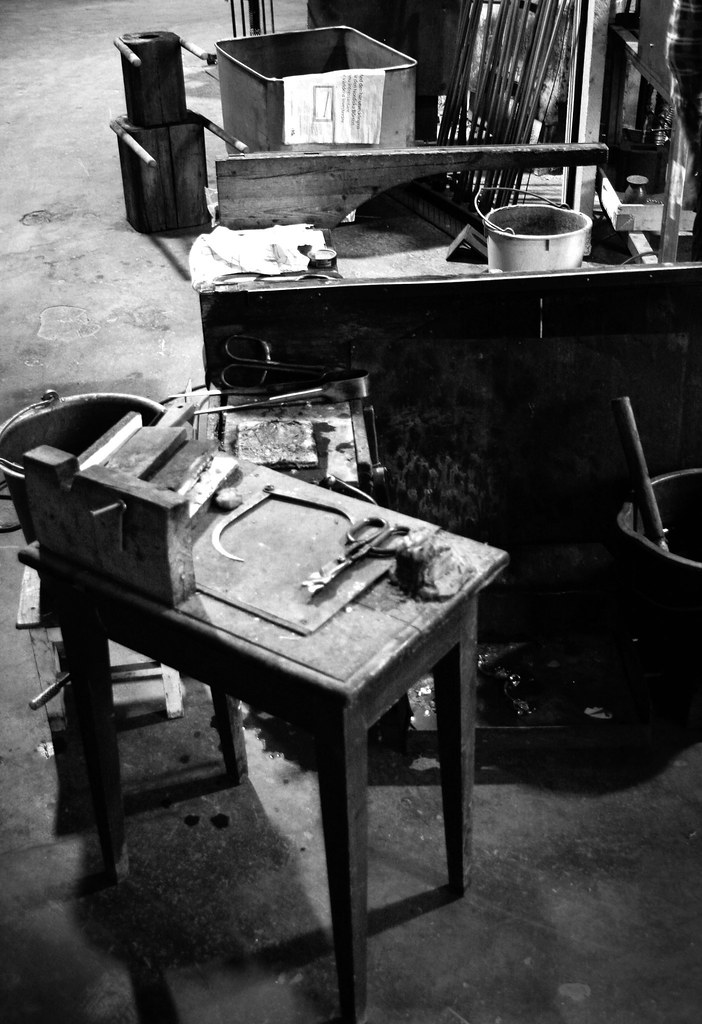Beauty touches us, it speaks to us on an emotional level. We are attracted to beauty... Being sensitive to beauty awakens in us emotions that are important. Someone who never engages in the contemplation and understanding of beauty is missing an area of human perception and emotion. But maybe most important, what is moving about beauty is that it is a strong means of communication.
- Atelier Areti

Atelier Areti's work speaks for itself. Still, I'm honored to have had such a wonderful conversation with them regarding their history, and their perspective on art, beauty, and craft/design. As an interior designer myself, I am always attempting to balance beauty, function, and design in a room, in an effortless manner.
Where one ends, one begins, and overlaps until there is no trace left. Design should be effortless, timeless, emotional. This is the challenge, correct? Design should comfort us, and art should confront us? Questions that seem to float, and fade.
Atelier Areti capture my thoughts perfectly regarding this balance: "a beautiful product to us is a product that also has to be useful and well made. It has to be a simple and elegant solution."
A sincere thank you to Atelier Areti - David John

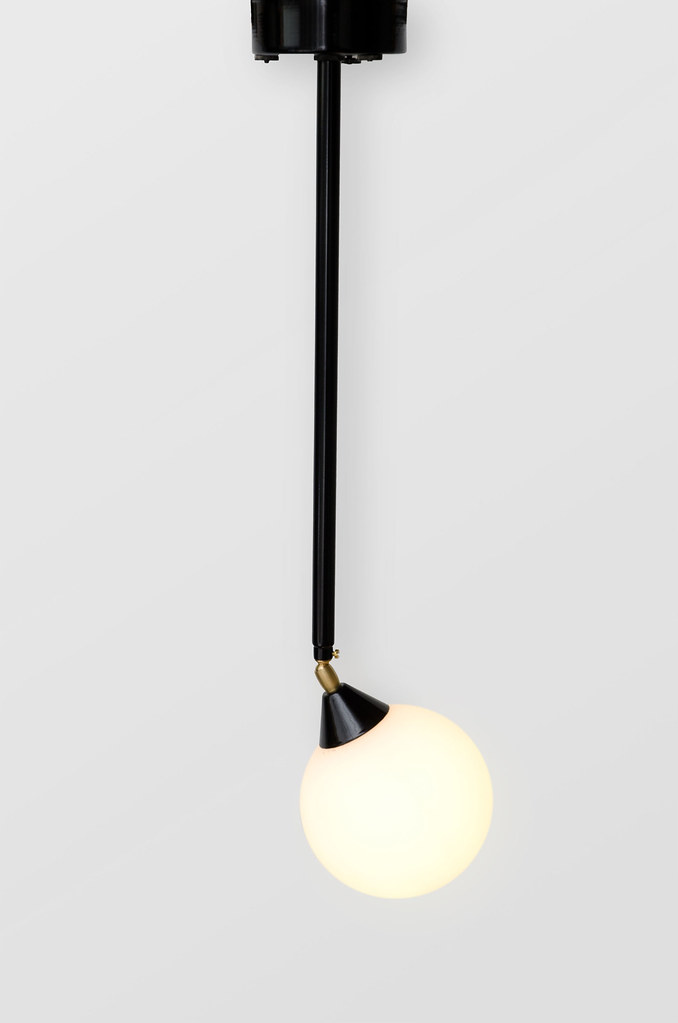
An interview with sisters: Guillane and Gwendolyn Kerschbaumer
How did you arrive at the name Atelier Areti?
‘Areti’ means virtue and excellence in Greek. We choose the name because to us design should aspire to be excellent, and excellent design has an ethical component. We are not interested in creating short lived products whose existence is based on short fashion cycles of our consumer society. While design is of course less important than other areas of our lives, there is still no reason for bad design to exist. Every object that our society produces by default has been designed, and it might as well be "well designed."
‘Areti’ was thus chosen as a leading theme for our work. We started out being 4 people who knew each other from school and worked on Areti on the side next to our regular jobs.
What were you doing before starting this business?
After 2 years, Guillane and I decided to pursue it further; as our last name suggests, we are sisters. Guillane’s background is art, product design and interior design. She studied art in an atelier and history of art at the Sorbonne in Paris, and later product design at Central St.Martins. She was chosen to be exhibited at 100% Futures and she was there approached by an interior designer for whom she worked for several years. She thus by accident one could say, stumbled into interior design.
I received a Bachelor in visual arts from Duke University and then moved on to study architecture at Harvard. I worked in a number of offices, among them Peter Eisenman in NY, MVRDV in Rotterdam, Kleihus und Kleihus in Berlin and Wiel Arets in Amsterdam. All of these offices had very different approaches, some of which I did not feel close to when it came to the actual architecture that was generated. Yet all were very instructive because in their extremeness there was always some non trivial truth to be found.
Currently I am working part time as a researcher in architecture and design in Prof. Harry Gugger’s group ‘laba’ at the Federal Technical University of Lausanne. I feel it is a great chance to be working in academia next to our work at Atelier Areti because academia fosters ideas and approaches that in the ‘real world’ are very difficult to pursue, yet are so important as an underlying drive and aspiration.
Our background, which is not product design per se, plays an important role in how we approach design. There is a strong sculptural aspect to our work. A light or piece of furniture has to stand its ground simply as a sculptural object. This sculptural strength is of course not sufficient (as we speak about products and not art) but it is necessary. Because we have worked on making spaces and furnishing them, we also approach product design from a spatial point of view. We always imagine how a light for example exists in a space, how it interacts with this space and defines it.

Why are objects important? Why do you seek beauty in objects?
Most things are relative. Objects are obviously not as important as some other things in our life, but given they exist, they might as well be adding to the quality of our life, rather than reduce it. Our immediate environment does influence our well being and being surrounded by beautiful, useful and well designed objects adds quality to our life. Being surrounded by poorly designed, ugly objects, that deteriorate and break quickly, cannot be repaired and thus end up as landfill reduces the quality of our life and environment.
Beauty touches us, it speaks to us on an emotional level. We are attracted to beauty, it is pleasing to look at something beautiful. Being sensitive to beauty awakens in us emotions that are important. Someone who never engages in the contemplation and understanding of beauty is missing an area of human perception and emotion. But maybe most important, what is moving about beauty is that it is a strong means of communication. One person creates a beautiful object and it resonates in and moves others. If no one responded to one’s notion of beauty, one would be very lonely. It is touching to think that something beautiful is the result of a person searching for the expression of certain feelings and thoughts and that another person can share these feelings by contemplation of the artist’s / designers’ work.
Beauty is a big word though and not everyone means the same thing by beauty. We do not imperatively refer to a classical notion of beauty and harmony, although the kind of beauty we strive for in our work is certainly closer to classical notions of beauty as expressed in classical and modernist art, architecture and design, rather than postmodern, deconstructive, pop, etc. currents.
Finally, design is of course not art. There is a component that it shares with art, but it is evidently not as pure in its purpose and more humble in its aspiration. Hence, a beautiful product to us is a product that also has to be useful and well made. It has to be a simple and elegant solution. It has to have been made in an environmentally conscious way. It has to age beautifully. If I know something is made of cheap plastic and will crack and deteriorate quickly, it does not matter that the shape is nice; in light of its poor construction and environmentally unsound approach, even the form seems superficial and looses its appeal.
Where did this fascination with lighting come from?
Our work at Atelier Areti currently focuses on lighting, with some explorations into furniture design. This focus came by chance rather than it being a conscious decision. Guillane developed a light as her final year project at Central St.Martins. This light was received well and we decided to develop it further into the Kirchschlag Collection. This collection is made from mouth blown and hand engraved crystal glass. There is something magical about this collection, that went beyond what we had imagined when we designed it. The simple oval forms seem to silently sparkle and float in the room.
We feel that this is like everything else in life. You are given some chances and conditions and you do the best with them. For us, lighting has been the ground on which Atelier Areti started and we think it is a great ground to work with. Lighting is a very beautiful subject to work with and it is very versatile. There are ceiling lights, standing lights, wall lights. There are lights that are task lights and others that create an atmosphere. It is thus a wonderful and endless subject of exploration for designers.
Atelier Areti is in search of a successful "partnership between design and material implementation."
What materials do you find yourself working with most?
We like to work with materials that have a ‘noble’ quality about them, rather than a ‘cheap’ one. By that we do not necessarily mean the actual cost of the material. Steel is not very expensive for example, but it is solid and it will not degrade disgracefully over time. We like materials that are strong and will thus last, that will age well, and that preferably can be repaired and thus last even longer.
A product that will survive construction wise, is of course not automatically one that survives design wise. Our aspiration is to make designs that are beautiful in the classical sense and useful and thus remain appealing over decades.
Ideally a piece of furniture or light (except the technical component which can be adapted) should live 50 - 100 years. This sounds outlandish in today’s consumer society, where a product is already outdated when it hits the retail shelves. Yet pieces from past decades or even centuries show us that a design that is beautiful and of good quality has a chance of survival in people’s hearts and thus buildings. Certain qualities will always be appealing because they speak to essential needs and desires that we all share.
A good product must thus be well designed and well executed. The material execution is always tricky because there are limitations which often force us to rework the design. More often than not though, these turn out to be opportunities to simplify the design and make it even more elegant and right. We believe that there is beauty in simplicity and that often the most simple solution is the most elegant. Of course there is also something to be said for opulence and the artificially inflated – but we like to keep these kind of expressions to tightly controlled instances. The strength of a design must also be deeper than its surface.
We are not interested in creating products whose beauty is dependent on them being in absolute perfect untouched condition. A design must withstand normal use and still be appealing. This means that the object’s shape, its material, its function are strong enough, that it can take on the traces of usage.
To summarize: We believe that a noble material enhances the design and vice versa, a good design showcases a given material well.
How long do pieces take to go from idea stage to "for sale" items?
In general it takes about 1 – 3 years to develop a product. A design can take 5 seconds to sketch and 3 years to develop with the manufacturer. We only work with manufacturers who are passionate about their work and proactive in proposing solutions to the problems we approach them with. Our strength is design and increasingly understanding of the manufacturing process, yet we are still completely dependent on the knowledge and craft of the manufacturer. Because we want to create products that will last, material and design wise, we take shortcuts only when we absolutely necessary. This often puzzles manufacturers. We often get their ‘design proposal’, as in ‘wouldn’t this look nicer … and be much simpler to make’? To which we politely reply that yes, that’s also an option, but we prefer to pursue our original idea.
So to contradict what we previously said – simplicity is not always our favored path. Sometimes in order to make something look simple and elegant, one actually has to jump through hoops. This comes down to the fact that various manufacturing processes pose limits that can be perceived as very artificial or arbitrary.
In terms of tools we use for design – We are very old fashioned. We sketch and make models that we hang all over the house. We will only design and manufacture something that we would like to own ourselves. We do use 3d modeling for the technical execution, but by that point, the design has already largely been figured out. Seeing the finished product is usually a joy and sometimes a disappointment. There are products that once made in the final material, size etc. simply were not good enough. This proves once again, that the material execution must not be underestimated.
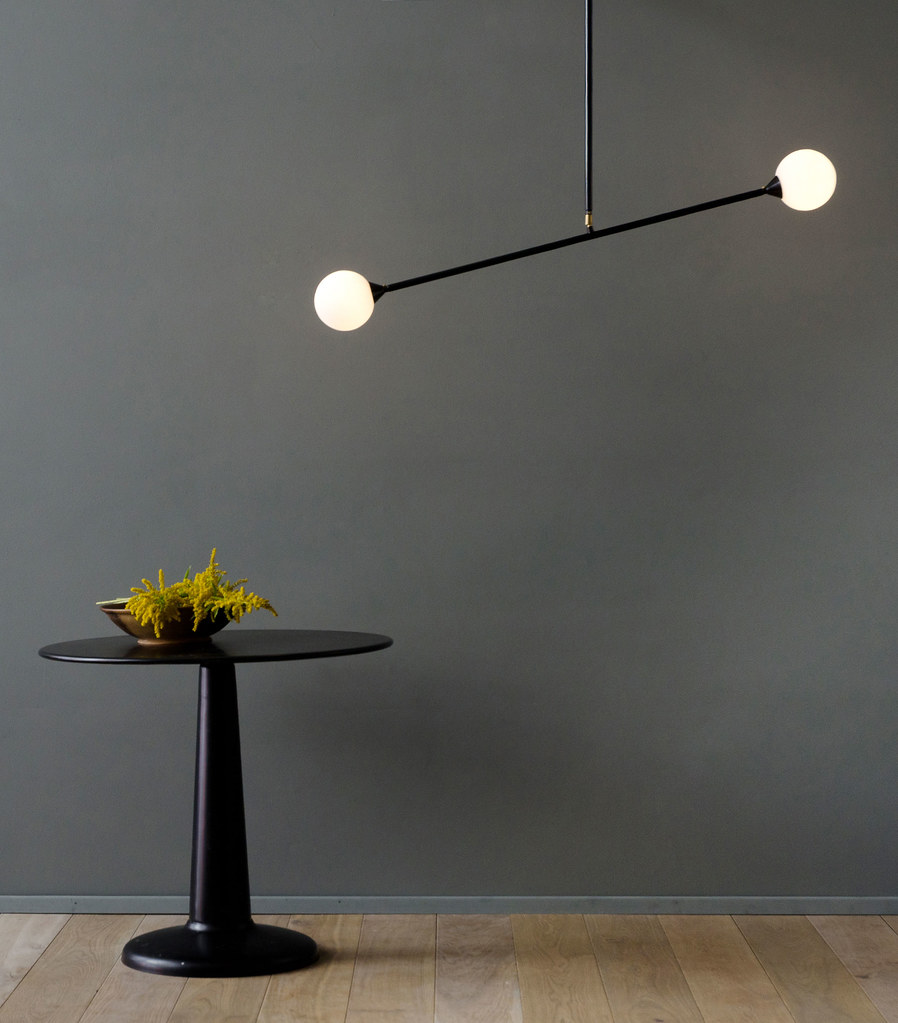
Do you collect lighting or art or design, if so, who are some of your favorite designers/artists that you collect?
Our mother was not trained in art or design, but clearly had an eye for beauty and it is a great pity that she has not been given the opportunity to pursue it professionally. Privately though, she has pursued it by making all the homes we have lived in showcases of beautiful objects. We have thus grown up among antique carved trunks from Afghanistan, Biedermeier benches and chests from Austria, French walnut cupboards, African sculptures, classical and impressionist paintings, and so much more from around the world. Often our mother would have bought something that no one else noticed and 10 or 20 years later we would see it in a magazine, at which point she would say ‘I bought that 20 years ago’!
We have somewhat inherited this trait of wanting to be surrounded by beautiful objects. Although in me it borders on hamstering and due to the frequent moves in the last 15 years, I have tended to cut down as all the packing and unpacking is becoming tiring. The bottom line though is, that we like to be surrounded by beautiful things and when something really stunning and within our budget crosses our path, it is difficult to resist.
I am personally very touched by classical greek sculptures, at least as we see them today, white and unpainted. I also like some African sculptures very much. My children call them ‘les messieurs et madames’ and occasionally dress them. Some have dented nose tips from being kicked over repeatedly. Since we have children, all art in our house has to be somewhat robust!
As far as designers, we like the usual suspects: Prouve, Mies van der Rohe, Le Corbusier, Ray and Charles Eames.
The future for Atelier Areti?
We would design every object in the world if given the opportunity! We have great ideas about how to make every bathtub, every couch, every doorknob more beautiful and useful. Of course we cannot do all of that, but our aspiration is to design more and more things. We will continue to pursue lighting passionately because it is a field we love and have expertise in. Currently we are working on about 5 new ranges to be manufactured in 2012. We have a few furniture projects that we are developing, but are still looking for the best manufacturing partnership. We also would like to expand our consultancy work as some projects such as bathroom furniture would never be something that we will venture into from the manufacturing point of view.
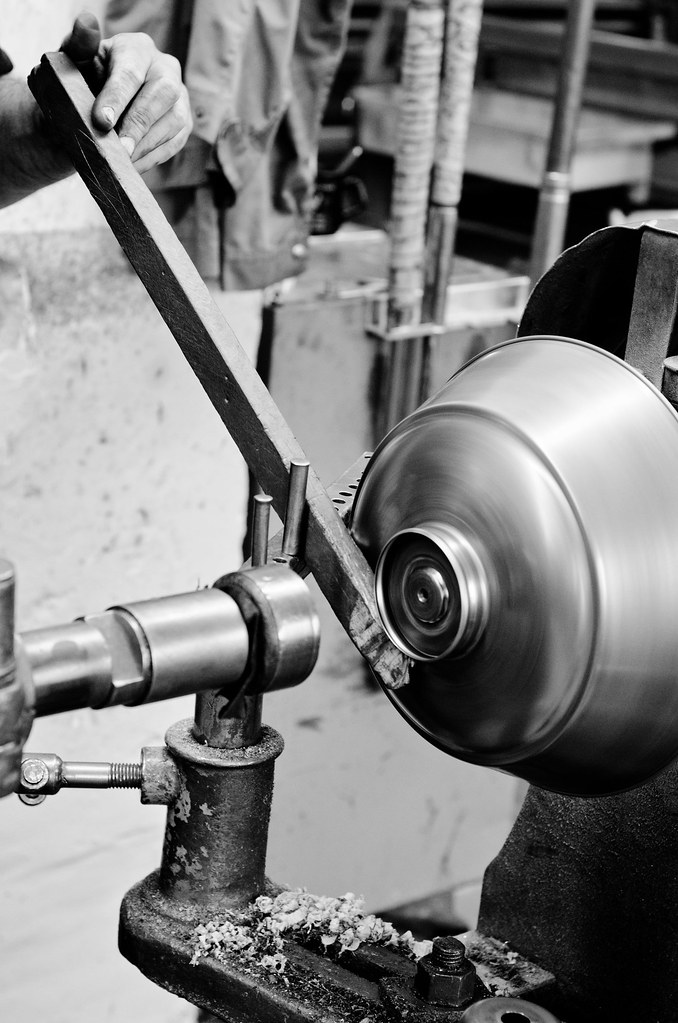
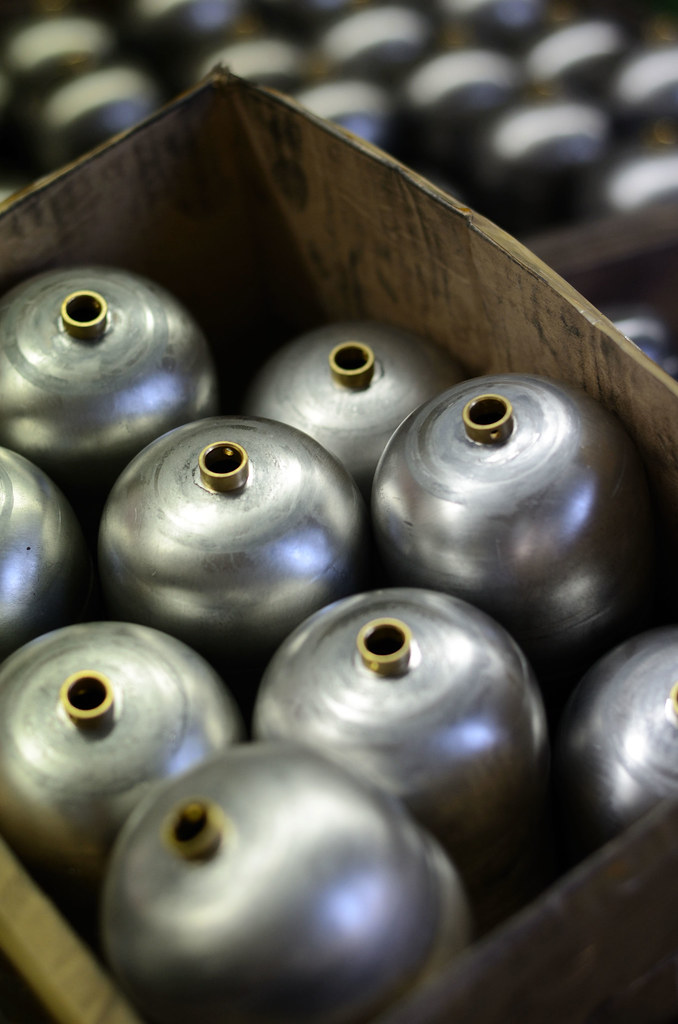
The craftsmen that work with Atelier Areti?
We like to work with craftsmen that are close enough, that we can regularly visit them in person. We thus work mainly with people in Germany, Sweden and the UK. As we are a young and small company, we also tend to work with small to medium sized manufacturing companies that will be interested in working on small series and made to order items. We have great love and appreciation for craftsmen and manufactures that work on well made, well thought through products. They are usually very humble, emphasizing that they do not understand much about ‘design’. Yet their passion about making things well is already an act of design that they are often not aware off.
Where can people find your work?
People can contact us directly or find our products in a few shops that are listed on our webpage. We are not sure yet what exhibitions we will participate in in the near future. Follow us on twitter and you’ll find out as soon as we have figured it out ourselves!
visit Atelier Areti here.
------------



